Graham Reid | | 8 min read
Sandy Edmonds: Come See Me
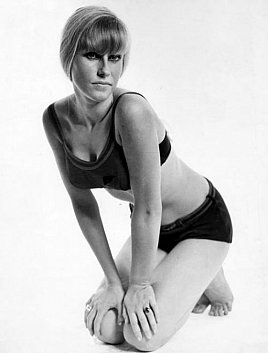
New Zealand pop culture harbours few mysteries, but the disappearance of Sandy Edmonds on the cusp of the 70s is certainly one.
Before she vanished the striking, lens-engaging singer -- long honey-blonde hair, sensuous teen-sullen pout and wide-eyed dolly-bird expression -- had been dominant in the music scene since the mid-60s.
In 67 she had a 26-week residency on C‘Mon -- the best loved local tele-pop show of the period -- and her Carnaby St-style was much mimicked by the fashion-conscious. Her face was on magazine covers -- the Listener included -- as the image of the Swinging Sixties Downunder.
She might not have had the strongest of voices (“she couldn’t sing a bloody note,“ said manager Phil Warren later) but through the management muscle of entrepreneur Warren she had hits -- her biggest being the utterly execrable I Love Onions with a silly spoken word section.
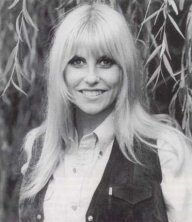 Teenager Sandy Edmonds -- born in Liverpool, dragged to New Zealand by her parents just when the Beatles were breaking big out of her hometown, and briefly a dental assistant in Devonport -- toured with the Rolling Stones and the Searchers, then the Walker Brothers, the Yardbirds and Roy Orbison.
Teenager Sandy Edmonds -- born in Liverpool, dragged to New Zealand by her parents just when the Beatles were breaking big out of her hometown, and briefly a dental assistant in Devonport -- toured with the Rolling Stones and the Searchers, then the Walker Brothers, the Yardbirds and Roy Orbison.
She performed in Hong Kong, Manila, Singapore and Hawaii, and inevitably established herself in Australia at the end of the decade. She was a star ascendant.
Then in late 69, after signing a $25,000 recording contract with RCA, her career took a U-turn. For six months she played lower profile gigs with club bands around Sydney, then one day simply disappeared.
In recent years there was a “Where’s Sandy?” website and some speculated she had been lost to drugs or disappeared into the criminal underworld.
“I had no idea,” laughs the 56-year old Melbourne woman who was once Sandy Edmonds. “Yes, I bolted and didn’t keep in contact with the past. But I didn’t disappear for any dark and dubious reasons, I just wanted to venture out into the world.”
Rosalie Edmondson-Corner, as she now is, went on a great adventure, but has now come full circle with the release of a 32-track CD The Sound of Sandy.
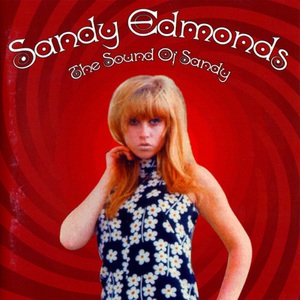 While happy to be given the retrospective collection, she didn’t court the attention. Sandy Edmonds is someone she once was, and a person few of her current friends have even heard of.
While happy to be given the retrospective collection, she didn’t court the attention. Sandy Edmonds is someone she once was, and a person few of her current friends have even heard of.
The reappearance of Sandy Edmonds -- who endured some “Edmonds Sure to Rise” headlines thanks to Warren’s assiduous management -- is almost as peculiar as her disappearance.
The world of Swinging Sixties friendships and connections is only a few degrees of separation, and Edmonds’ begins with Auckland cabbie Grant Gillanders.
As a collector of 60s Kiwi music Gillanders has many mint condition original albums and singles of the period. Four years ago EMI were putting together a compilation of the Wellington band Simple Image ( biggest hit the number one single Spinning Spinning Spinning in July 68) but learned they didn’t have the master tape of one particular song. The call went out among collectors for anyone with a clean copy, Gillanders took his original vinyl to EMI, they mentioned they were doing one for the singer Shane (with whom Gillanders just happened to be doing some video work), and he offered to select the tracks.
Since then he has done nine compilations of 60s bands, including last year’s Top Of The Dial collection which included Edmonds’ I Love Onions. There is also his A Day in My Mind's Mind series of psychedelic Sixities popp and rock.
“I do them as a hobby,” says Gillanders, “which means it ends up costing me because of toll calls and running around picking up artwork. I get a couple of copies of the CD and I’m happy with that.
“In 67 I was 12 or 13 and too young to be part of the scene, I never saw these people live. This is my way of putting things back.”
After Top of the Dial, which has sold around 1000 copies, Gillanders considered an Edmonds collection, “just because nobody else had done it”.
He too thought she had simply disappeared.
When he called Clive Coulson -- formerly of the Mods who had a track on Top of the Dial -- to send him a copy of the album he mentioned the Edmonds’ idea.
Clive Coulson’s was born in England but grew up in New Zealand. He played in the Mods, the Rayders and the Dark Ages during the 60s, then moved to Australia and was the singer with Mecca. He relocated to London and fell in with Led Zeppelin as a roadie, then became guitarist Jimmy Page‘s personal road manager. He went on to manage hard rockers Bad Company at the height of their career.
 Three years ago he received an e-mail from Mecca bassist Bob Daisley, then playing in Ozzy Osbourne’s band. On his website Daisley mentioned having been in a band with Coulson, and he had received a call from someone wanting to locate Coulson. Bob called Clive and gave him the number to ring. Sandy answered.
Three years ago he received an e-mail from Mecca bassist Bob Daisley, then playing in Ozzy Osbourne’s band. On his website Daisley mentioned having been in a band with Coulson, and he had received a call from someone wanting to locate Coulson. Bob called Clive and gave him the number to ring. Sandy answered.
Coulson and Edmonds have been in regular contact since. He had been speaking to her the day before Gillanders rang.
“She’s looking forward to the CD coming out,” says Gillanders, “so as to put a close to that part of her life. But the stories were wild, there was one that she was on the run from the Mafia, and another that she had been kidnapped by Indian bandits in the Khyber Pass.”
The truth may be more prosaic, but no less interesting.
In 1970 Edmonds simply turned her back on a life in hotel rooms. Despite her high-profile career here and in Sydney -- where she appeared on dozens of television shows and was invited to join the Seekers when singer Judith Durham quit -- she was still only 20. So she did what people her age do: took off on her OE.
“I wanted to experience what it was like to have freedom to explore countries, not just be in a place for a few days. So I left.
“A lot of things were being offered but I’d had enough, not because I didn’t like it but that I wanted a complete change. I was walking away from a career that was looking like it was going to be very successful because all the avenues were open. I had the personality, I wore the clothes, I was up-to-date with everything, and I had contacts overseas.
“But I wanted something more than the entertainment industry.”
She had also met Michael, who became her first husband, and this was an adventure the solo artist could share with somebody.
For eight years they were on the hippie trail from Sydney to London via Burma, India and all points west. Their first stop was Bali at a time when there was few tourists, no electric lights, and men still wore batik sarongs.
“Then Newsweek did a huge story on the tropical paradise. Within a few weeks the planes were flying in American tourists and you could see what was happening. So we moved on.”
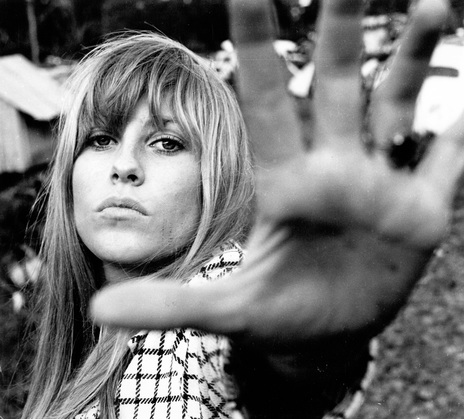 To Burma where Michael’s long hair was cut it in the airport by the authorities before they would let him enter the country. To India where she felt a sense of spiritual awakening and serenity. Then to Nepal, Afghanistan and onward through Iran and Turkey.
To Burma where Michael’s long hair was cut it in the airport by the authorities before they would let him enter the country. To India where she felt a sense of spiritual awakening and serenity. Then to Nepal, Afghanistan and onward through Iran and Turkey.
“I’d made money and at that time it didn’t cost much to travel. But I always had inner resources and liked fashion so I’d pick up pieces [of clothing] and sell them in markets. Being in the music industry you never had a regular wage or any certainty, and that has been one of the best things in my life.
“I’ve never relied on a regular wage but used my wits to get by.”
In London she could have re-engaged with music but Michael, from whom she had separated, was ill so they returned to Australia via the States. They tried to make a go of it again. When that didn’t work she came back to New Zealand for a few months to rethink.
She briefly got back into music in Australia with a jazz-blues band -- the Sandy Edmonds Band, the name giving the lie to the belief she was her hiding out -- but it was deliberately “an underground thing“. She avoided television appearances and using the contacts she had, and after a year quit again.
She had a four year old son to her French-Vietnamese partner and wanted to spend time with him.
If there is a refrain through Edmonds’ life it is that she will cheerfully change direction: “It’s the gipsy in me -- and I do see myself that way -- which allows me to move from thing to thing.”
Her passion for fashion however has been a constant.
“Fashion was something I enjoyed and it was part of the groove [in the 60s]. I felt I was a bit of fashion statement in those days, not just a clothes horse.”
More than a singer, Sandy Edmonds had been A Fashion Statement: famously banned from a C’mon show for her cave-woman bikini. The booklet in her CD shows her in a zebra-design bikini top, and her eyes painted with butterflies.
So when music no longer appealed and with almost a decade of travel behind her she and a friend opened a clothing shop in Melbourne’s Camberwell suburb called Penny Lane. A few years later she started her own fashion house Picked By A Rose -- after her birth name Rosalie -- for an elite clientele.
“I got very lucky. The head bursar of Melbourne Grammar had a house in South Yarra opposite the botanical gardens. Primo real estate. He offered me it at a reasonable rent. It had 25 rooms with a staircase like Gone with the Wind, and we put in the leather lounge suite and gilt mirrors.”
For eight years she catered to a select group of wealthy women. She had machinists upstairs and two in-house models who would sweep down the stairs dressed in the garments, twirl, then go back up the other side.
She remarried -- a Maori man who is the father of her 13-year old daughter Chanel but from whom she separated seven years ago -- and then started a children’s boutique with another friend.
Today she is in sole charge of Shibuki, and has shifted the range back to women’s fashion.
“I love seeing someone put on something and feel good, we need to have those feelings. People are too depressed, have financial burdens, are burning out too quickly. Young kids are committing suicide and the world is full of too much pain. And we need to change it, and it comes from our own consciousness to give out good things. We need to share.”
It all sounds unfashionably 70s and yes, on the hippie trail she did the drugs (“we all did”), but today she is health conscious and still practices hatha yoga and meditation.
Briefly businesswoman Rosalie Edmondson-Corner will be Sandy Edmonds to promote The Sound of Sandy (“and put that to rest”) before going back to her real self. Being Sandy again has brought back fond memories of the New Zealand music industry in the 60s (“like a big family, no animosity or petty jealousies”) but the past is just an old, half remembered song.
And something else will come along. It always has.
She recalls those years when everyone thought she was lost, but in fact she was found.
“I knew even then that this is not a rehearsal, this is just one chance and I wanted to explore it all. I sat in the Taj Mahal on my birthday, watched the full moon in the Himalayas where it is so big at 14,000 feet you feel you can touch it, went to Burma. I look back and thank my stars I’ve had those experiences and been to places which are now closing off.
“My whole life has been one big buzz ball.”




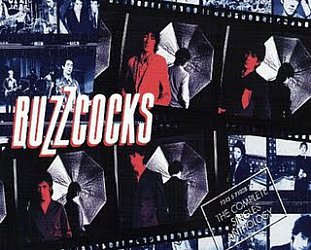


post a comment